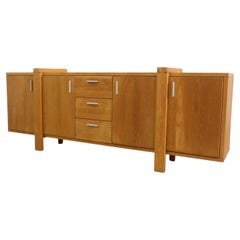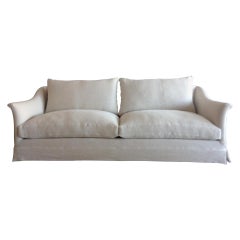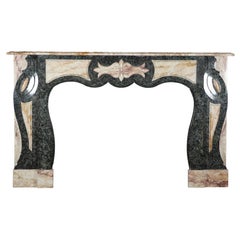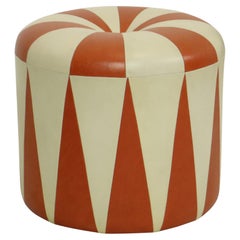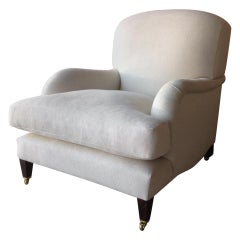Belgian Furniture
to
630
6,449
1,805
5,756
2,412
215
1,499
1,156
661
262
210
155
74
63
62
51
44
39
33
31
23
15
9
6
450
618
4,688
2,627
762
2,227
1,225
93
43
216
379
118
417
620
787
187
103
3,432
2,612
1,310
1,106
1,072
9,489
574,891
168,027
166,558
138,522
8,383
6,552
6,896
309
294
217
92
91
Place of Origin: Belgian
Brutalist Pierre Chapo Inspired Oak Sideboard by Mintjens Belgische Meubelmakers
By Pierre Chapo
Located in Los Angeles, CA
Mintjens Belgische Meubelmakers Brutalist oak sideboard with 4 doors and 3 drawers, all with slender aluminum handles,. Handsome construction with legs that wrap around the piece. In...
Category
Mid-20th Century Mid-Century Modern Belgian Furniture
Materials
Oak
Antique Belgian Spa Tea Caddy
Located in Northampton, GB
Depicting Various Spa Scenes
From our Tea Caddy collection, we are delighted to introduce this superb Belgian Spa Tea Caddy. The Tea Caddy of square form made from Sycamore is beaut...
Category
Late 18th Century George III Antique Belgian Furniture
Materials
Sycamore
The Lily, Bespoke Handmade Belgian Linen Sofa
Located in Jesteburg, DE
Introducing the home collection.
An iconic, unobtrusive design.
A small selection of timeless Flemish designs made by hand for us in a small third...
Category
2010s Modern Belgian Furniture
Materials
Linen
$8,701 / item
20th Century Art Deco Fireplace Mantel in Belgian Marble
Located in Beervelde, BE
This is a very unique marble combination typically used in the inter war period.
The shelf is made in parefeuille.
Measures:
171 cm EW 67.32".
103 cm EH 40.55".
109 cm...
Category
Early 20th Century Art Deco Belgian Furniture
Materials
Marble
Round Vintage Pouf Orange Cream Two-Tone Skai Sixties
Located in Poperinge, BE
Cool vintage round ottoman in Moroccan patchwork style, made from a wooden base and upholstered in high-quality two-tone orange-brown and cream f...
Category
Mid-20th Century Belgian Furniture
Materials
Faux Leather
The Howard, Custom Made Belgian Linen Armchair
Located in Jesteburg, DE
Introducing the home collection.
A small selection of timeless Flemish designs made by hand for us in a small third generation workshop in Belgium.
...
Category
2010s Modern Belgian Furniture
Materials
Linen
$4,992 / item
Antique Oak Chair with Gothic and Religious Carvings, 1890s
Located in OOSTERHOUT, NL
A stunning antique oak chair adorned with intricate Gothic and religious carvings, showcasing remarkable craftsmanship and historical character. The old upholstery is aged with light...
Category
Late 19th Century Gothic Revival Antique Belgian Furniture
Materials
Oak
De Coene Freres Palmwood Armoire, Mid 20th C.
By De Coene Frères
Located in Philadelphia, PA
This stunning 1960s armoire is fully fitted behind the three beautifully grained doors. Each opens to reveal a section with a mixture of elements including mirrors, shelves, a brass ...
Category
Mid-20th Century Mid-Century Modern Belgian Furniture
Materials
Palmwood
Set of Dining Table with 5 Swivel Wire Chairs by Rudi Verelst for Novalux
By Novalux Belgium, Verner Panton, Warren Platner, Rudi Verelst, Knoll
Located in München, DE
Stunning Belgian dining room set from the 1970s.
Exceptionally successful design and a real asset to any home.
The swivel chairs are comfortable and their angular design makes them a...
Category
1970s Mid-Century Modern Vintage Belgian Furniture
Materials
Metal
Vintage Ceramic Coffee Table Tile Table Adri Belarti Seventies Design 109cm
By Juliette Belarti
Located in Poperinge, BE
Vintage ceramic coffee table, tile table with a painting as a top, by Juliette Belarti for Adri, iconic Belgian retro design from the 70s, drawn on a corner of the table.
Brown glaz...
Category
1970s Vintage Belgian Furniture
Materials
Chrome
Antique Bronze Box from Belgium Gothic Style
Located in Miami, FL
Gothic Style, very detailed crafted antique bronze box.
Marked underneath, made in Belgium.
In original good condition.
A-444-335
Category
20th Century Gothic Belgian Furniture
Materials
Bronze
Brutalist Paul Evans Inspired Side or Coffee Table with Sculptural Base
By Paul Evans
Located in Los Angeles, CA
Brutalist Paul Evans inspired Mid-Century side or coffee table with round glass top and sculptural base. Black feet pads on base. In original condition with visible wear consistent w...
Category
1960s Mid-Century Modern Vintage Belgian Furniture
Materials
Metal
Painting - Portrait of a Chihuahua Dog - By Robert Detrixhe
Located in Casteren, Noord-Brabant
A beautiful painting, a portrait of a Chihuahua dog.
The painting was made by the Belgian artist Robert Detrixhe. The painter was born in 1935 and was particularly active at the end ...
Category
1980s Modern Vintage Belgian Furniture
Materials
Paint
Val Saint Lambert Crystal Vase Charles Graffart Cut to Clear Signed
By Val Saint Lambert
Located in Verviers, BE
Val Saint Lambert vase Charles Graffart, catalogue, 1950s.
Beautiful signed Val Saint Lambert circular crystal vase, handcut-to-clear, the glass is thick, deeply and evenly cut,
Sig...
Category
1950s Art Deco Vintage Belgian Furniture
Materials
Crystal
Art Deco Dresser designed by De Coene Belgium
By De Coene Frères
Located in Antwerp, BE
Antique Art Deco dresser in beautiful cherry colored veneer and sculptural feet. Three drawers with brass hardware.
Dimensions: 114 W x 88 H ...
Category
1930s Art Deco Vintage Belgian Furniture
Materials
Cherry
$2,407 Sale Price
25% Off
Large Red Ceramic Mirror by Oswald Tieberghien, Belgium 1970s
By Oswald Tieberghien
Located in München, BY
A beautiful large round ceramic mirror by Oswald Tieberghien, Belgium, 1970s.
The red ceramic mirror is in very good condition with no damage. The mirror glass was replaced once and...
Category
1970s Mid-Century Modern Vintage Belgian Furniture
Materials
Ceramic, Mirror, Bentwood
Donbar Faceted Fireplace in Patinated Iron
Located in Waalwijk, NL
Donbar fireplace, iron, Belgium, 1970s
A 1970s fireplace by Donbar made in Belgium in the 1970s. Crafted from patinated black iron, this fireplace embraces a mesmerizing interplay o...
Category
1970s Mid-Century Modern Vintage Belgian Furniture
Materials
Iron
The Salon, Custom Made Belgian Linen Armchair
Located in Jesteburg, DE
Introducing the home collection.
A small selection of timeless Flemish designs made by hand for us in a small third generation workshop in Belgium.
...
Category
2010s Modern Belgian Furniture
Materials
Linen
$4,992 / item
17th Century Brussels Historical Tapestry, the Marriage of Suleiman & Emmanuel
Located in New York, NY
A Brussels historical tapestry from the 17th century, depicting a scene from the epic of the legendary Mongol conqueror, Tamerlaine, victor over the Turkish Sultan...
Category
17th Century Antique Belgian Furniture
Materials
Wool
$89,995 Sale Price
40% Off
Illuminated World Globe Lamp 1967 Standard Globe Dutch Gdp Italy
Located in Poperinge, BE
Vintage illuminated globe lamp, physical and political Standard Globe in Dutch, printed in Italy, by GDP, 1967.
The scale of the globe is 1:50,000,000.
High-quality plastic globe o...
Category
1960s Vintage Belgian Furniture
Materials
Chrome
Brutalist Coffee Table with Copper Top and Wooden Base 1970
Located in Oirlo, LI
This striking Brutalist coffee table, crafted in Belgium during the 1970s, features a beautifully hand-worked copper top resting on a sculptural solid wood base. Its bold yet minimal...
Category
1970s Mid-Century Modern Vintage Belgian Furniture
Materials
Copper
De Puydt Heavy Brutalist Oak Trestle Table or Desk in Dark Stained Oak
By De Puydt
Located in Los Angeles, CA
Mid-Century, Belgian manufacturer De Puydt attributed, stunning Brutalist dining table or desk with trestle base. Beautiful, solid dark oak with striking, carved, grooved, textural t...
Category
Mid-20th Century Brutalist Belgian Furniture
Materials
Oak
Pair of side tables in mosaic brass by Jean Claude Dresse.
By Jean Claude Dresse
Located in Brussels, BE
Jean Claude Dresse, Pair of side tables in Mosaic brass and agate, Belgium, 1970.
This unique pair of side tables by Dresse belonged to a private collection in Namur, Belgium. Made...
Category
1970s Mid-Century Modern Vintage Belgian Furniture
Materials
Agate, Metal, Brass
Mahogany Two Door Vitrine
Located in Evergreen, CO
Crafted from mahogany veneer and solid oak that have been finished in a rich, dark stain consistent with mahogany's reddish-brown tones, this antique vitrine from the turn of the 20t...
Category
Early 20th Century Louis Philippe Belgian Furniture
Materials
Glass, Mahogany
Large Sideboard in Ash Wood, 1960s
Located in Antwerp, BE
Straight-lined 1960s sideboard with four double doors and black laminated top. The large, beautifully sideboard was designed for a modern apartment in 1965 by an unknown artist. The ...
Category
1960s Mid-Century Modern Vintage Belgian Furniture
Materials
Ash, Laminate
$3,803 Sale Price
20% Off
Midcentury Val Saint Lambert Glass Table Lamp
By Val Saint Lambert
Located in London, GB
Val Saint Lambert is a glass manufacturer, founded in 1826 and based in Seraing. It has the royal warrant of King Albert
The beautiful colours enhance the swirls in the skirt of th...
Category
1950s Mid-Century Modern Vintage Belgian Furniture
Materials
Blown Glass
Bespoke Handmade Belgian Linen Sofa
Located in Jesteburg, DE
Introducing the home collection.
An iconic, unobtrusive design.
A small selection of timeless Flemish designs made by hand for us in a small third generation workshop in Belgium....
Category
2010s Modern Belgian Furniture
Materials
Linen
$10,104 / item
"A Mother and Her Children in the Kitchen" by Bernard Pothast
By Bernard Pothast
Located in Wiscasset, ME
This is an original unique oil painting by the artist Bernard Pothast, signed in the lower right corner, featuring a mother and her children sitting around the kitchen table. Measure...
Category
Early 20th Century Dutch Colonial Belgian Furniture
Materials
Paint
Classic Gold Leaf Mirror Crested Mirror Baroque Deknudt
By Deknudt
Located in Poperinge, BE
Mid-century Deknudt mirror in a classic wooden frame gilded with gold leaf, entirely in Baroque style. The design is attributed to Deknudt, Belgium, 1950s.
The Belgian house Deknudt...
Category
Mid-20th Century Baroque Belgian Furniture
Materials
Gold Leaf
Custom Set of Eight French Style Ladder Back Chairs
Located in Woodbury, CT
These chairs, constructed in sturdy oak, but finished in a fruitwood stain offer the best of both worlds: Handsome French country style and solid, substantial construction. The rush ...
Category
21st Century and Contemporary French Provincial Belgian Furniture
Materials
Oak
$12,250 / set
Boch Frères Vase with Stylized Floral Motifs
By Boch Freres Keramis
Located in Antwerp, BE
An Art Deco ovoidal vase with floral motif in warm shades covering the body from the Belgian Boch Frères Ceramic Factory.
The Boch Frères Keramis factory was one of Belgium’s large...
Category
Mid-20th Century Hollywood Regency Belgian Furniture
Materials
Ceramic
$1,069 / item
Contemporary FIRA bar cabinet in american walnut & burl veneer
Located in 1204, CH
Tim Vranken is a Belgian furniture designer who focuses on solid, handmade furniture. Throughout his designs the use of pure materials and honest natural processes are paramount. The...
Category
2010s Belgian Furniture
Materials
Walnut, Burl
Stunning Atomium Souvenir Building Sculpture Marble Base Bruxelles Belgium 1960s
Located in Nuernberg, DE
A decorative souvenir building sculpture. The Atomium is a landmark building in Brussels, Belgium, originally constructed for the 1958 Brussels World's Fair (Expo '58). This on is a ...
Category
1960s Art Deco Vintage Belgian Furniture
Materials
Marble, Metal
Val Saint Lambert Crystal and Gold Plated Ice Bucket, Barware, Belgium, 1950s
By Val Saint Lambert
Located in Richmond, Surrey
Midcentury Val St Lambert crystal and gold-plated cocktail ice bucket, barware, Belgium, 1950s.
A beautifully cut crystal ice bucket, made in Belgium by the prestigious house Val ...
Category
1950s Mid-Century Modern Vintage Belgian Furniture
Materials
Cut Glass
Art Deco Gateau Set, Porcelain Plate with Handle or Carrier in Wrought Iron
Located in Verviers, BE
This unusual Belgian piece has the hallmarks of Art Nouveau and combines a ceramic gateau plate in a wrought iron carrier,
The ceramic plate produced in Germany, features an Art No...
Category
1930s Art Nouveau Vintage Belgian Furniture
Materials
Metal
Modernist Cupboard by Willy Van Der Meeren for Tubax – Belgian Design Icon, 1950
By Willy Van Der Meeren, Jean Prouvé, Tubax
Located in Dronten, NL
An exceptional example of European mid-century modernism, this cupboard by Willy Van Der Meeren for Tubax was designed in the early 1950s and remains one of the most celebrated piece...
Category
1950s Mid-Century Modern Vintage Belgian Furniture
Materials
Steel
Enormous Industrial Belgian 6-Light Cast Iron Chandelier
Located in Chicago, IL
Enormous industrial Belgian 6-Light cast iron chandelier, with metal shades. Impressive scale and patina. Wired for USA, in working condition.
57" Diam x 41" Drop
shades 17"H x 10...
Category
20th Century Industrial Belgian Furniture
Materials
Metal, Iron
Original Vintage Postal Services Advertising Poster Brussels London Air Mail
Located in London, GB
Original vintage postal services advertising poster - Courrier Postal Aerien de Nuit Bruxelles Londres / Night Airmail Brussels London - featuring a great Art Deco design showing a red plane lit up by two bright searchlights shining from Bruxelle Brussel and Londres Londen in the corners below, the logo of a crown over a red lion in a post horn...
Category
1920s Art Deco Vintage Belgian Furniture
Materials
Paper
19th Century Louis XVI Style Marble Original Antique Fireplace Mantel
Located in Beervelde, BE
A fine original antique fireplace surround in the Louis XVI style of the 19th century. In perfect condition from Paris and executed in Skyros de Grèce Marble
Measures:
145 cm Exterio...
Category
19th Century Louis XVI Antique Belgian Furniture
Materials
Marble
Art Nouveau Brass Wall Mount Candlesticks, 1930s
Located in Verviers, BE
Art Nouveau brass pair of Wall Mount candlesticks 1930s
Originel Patina
Excellent condition.
looks simply stunning.
Category
1930s Art Nouveau Vintage Belgian Furniture
Materials
Brass
Belgian Brutalist Aluminum Door Decoration
By Paul Evans
Located in North Hollywood, CA
Belgian brutalist cast aluminum door grill or wall decor in anodized antique bronze finish. It can easily mounted to your existing door or on the wall.
...
Category
1970s Brutalist Vintage Belgian Furniture
Materials
Aluminum
$2,212 Sale Price
25% Off
Jos De Mey by Van Den Bergh Pauvers, Belgium, 1960s Large Modern Wardrobe
By Jos De Mey, Van den Berghe-Pauvers 1
Located in Antwerp, BE
Very rare large wardrobe commissioned for a luxury apartment designed in 1960 by Jos De Mey one of the after the war Belgium Modern designers in the 50s and 60s.A beautiful loft ,sleeping-room or office wardrobe...
Category
1960s Mid-Century Modern Vintage Belgian Furniture
Materials
Laminate, Cherry
$6,686 Sale Price
25% Off
Tekna Docklight Ceiling Light with Dark Bronze Finish and Clear Glass
By Tekna
Located in New York, NY
Ceiling light in solid brass with clear or frosted glass. For indoor and outdoor use (IP44).
Lamp LED 230V E27 4W 2700K Retro A60. Main power 230V 50Hz.
Category
21st Century and Contemporary Modern Belgian Furniture
Materials
Brass
Custom sheepskin by Carine Boxy -- "Smile" rug
Located in Antwerpen, BE
The Smile rug by Belgian artist and designer Carine Boxy is a tactile collage of natural animal skins—primarily sheep—carefully selected and sewn together to form a soft, sculptural ...
Category
2010s Belgian Furniture
Materials
Sheepskin, Feathers
Gustave Serrurier-bovy (1858-1910) "moulin Clock" -1905
By Gustave Serrurier-Bovy
Located in Bilzen, BE
Gustave Serrurier-Bovy (1858-1910) Moulin Mahogany, brass, painted glass paste numbers
Creation date: 1905
H 59 CM XL 34 CM
Original movement, running
Bibliography: - Françoise Bi...
Category
Early 1900s Art Nouveau Antique Belgian Furniture
Materials
Brass, Iron
Long coffee table by CHANEL
By Chanel Kapitanj
Located in Saint-Ouen (PARIS), FR
Coffee table in textured and patinated steel.
Signed piece by the artist K. Chanel.
France, 2025.
Category
21st Century and Contemporary Modern Belgian Furniture
Materials
Steel
$12,244 / item
Art Deco Stained Flower Quirlande Glass Window in Etched Glass and Brass
Located in Antwerp, BE
A 1920s Flower Quirlande glass window in various glass, etched glasses, red glass, yellow, amber, pink, green, and blue decorations. Stylized flowers are decorated on a pillar, with ...
Category
1920s Art Deco Vintage Belgian Furniture
Materials
Brass
Etched Brass Side Table by Georges Mathias
By George Mathias 1
Located in Vlimmeren, BE
This unique coffee table was created by Georges Mathias in the 1970s. The table is made of etched brass with a laminated black base.
Each table is an exclusive piece etched and sign...
Category
1970s Modern Vintage Belgian Furniture
Materials
Brass
19th Century Oil on Canvas Chicken Painting in Gilt Frame Signed H. Schouten
By Henry Schouten
Located in Dallas, TX
Decorate a study or a den with this antique chicken painting composition. Created in Belgium circa 1890, and set in the original thick carved giltwood frame, this large painting depi...
Category
Late 19th Century Antique Belgian Furniture
Materials
Canvas, Giltwood
Antique Rug, Tapestry Felemish Style Wall Decoration Object, Decorative rugs
Located in Wembley, GB
A fabulous 19th-century handwoven tapestry in an excellent condition. The scene of celebration among nature. A similar technique is used for making the tapestry as in Aubusson and Ne...
Category
1970s Aubusson Vintage Belgian Furniture
Materials
Wool, Organic Material, Cotton
Mid-Century Modern coffee tables tiles Belarti (3 pcs)
By Juliette Belarti
Located in Waddinxveen, ZH
A very nice set of coffee tables or nesting set from the Mid-Century period.
Designed by J. Belarti.
The largest table is 44 cm high, width is 60
cm and de...
Category
Mid-20th Century Mid-Century Modern Belgian Furniture
Materials
Stainless Steel
A Flemish Verdure Tapestry, 18th Century
Located in ARMADALE, VIC
A Flemish Verdure Tapestry, 18th Century
Depicting a woodland scene, with a large tree in the foreground and a city in the far background.
Provenance: Private Australian Collection...
Category
18th Century Antique Belgian Furniture
Materials
Wool
Lead bread by Bruno kristo
Located in Diest, BE
lead bread half hand-sliced by artist Bruno Kristo shown at 'Brood Casting' exhibition.
Bruno Kristo transforms an everyday staple into a striking sculptural statement with this loa...
Category
2010s Other Belgian Furniture
Materials
Lead
$10,698
19th C Walnut Mirror
Located in Nijlen, BE
Beautiful old 19th C Belgian mirror.
Carved from walnut wood in a twisted pattern.
Over the years, the mirror glass has been replaced, making it clear and perfectly usable. This int...
Category
19th Century Other Antique Belgian Furniture
Materials
Walnut
$1,307
Contemporary Fragment Desk with bone white patinated leather
Located in 1204, CH
Jumandie Seys is a Belgian artist and interior designer whose work straddles the boundary between art and design. In his quest for pure expression of form and material, he creates ob...
Category
2010s Belgian Furniture
Materials
Stainless Steel
Vintage Golden Sunburst Mirror, 1960s
Located in Leuven, Vlaams Gewest
Heavy gilded resin sunburst mirror with convex mirror glass.
The golden mirror is in a good condition.
1960s - made in Belgium.
Dimensions:
Diameter: 55cm/ 21.6"
Diameter glass: 1...
Category
1960s Empire Vintage Belgian Furniture
Materials
Mirror, Resin
$475 / item
mid century wardrobe by Alfred Hendrix for Belform, Belgium 1960
By Belform, Alfred Hendrickx
Located in Antwerpen, Antwerp
Alfred Hendrickx wardrobe with sliding doors for Belform. Belform has a strong reputation to use quality materials for there furniture. The wardrobe dates back from the late 60s and ...
Category
1960s Mid-Century Modern Vintage Belgian Furniture
Materials
Wood
Liz Tables Boho Style Coffee Table Boulder Form Naturelle size 120
Located in Nijlen, BE
This unique coffee table named Tomelle is an inspiration of the boulders found in a river. When a boulder is cut in half, you get the form of this coffee table. To get a nice contras...
Category
21st Century and Contemporary Bohemian Belgian Furniture
Materials
Stone, Marble
Bespoke Handmade Belgian Linen Daybed
Located in Jesteburg, DE
Introducing the home collection.
An iconic, unobtrusive design.
A small selection of timeless Flemish designs made by hand for us in a small third generation workshop in Belgium....
Category
2010s Modern Belgian Furniture
Materials
Linen
$5,824 / item
Antique 17th Century Green Flemish Verdure Landscape Tapestry with Birds
Located in New York, NY
This is a gorgeous full color antique 17th century Flemish Verdure landscape tapestry depicting a beautiful and rich summer scene of a countryside with lush trees and vegetation, and...
Category
17th Century Baroque Antique Belgian Furniture
Materials
Wool
Still Thinking About These?
All Recently ViewedMore Ways To Browse
Antique Shoe Iron
Antique Silver Candle Sconce
Antique Spanish Trunk
Antique Tavern Sign
Antique Thangka Tibet
Antique Tiffany Mantel Clock
Antique Tiffany Mantel Clocks
Antique Tortoise Shell Glasses
Antique Wood Filing Cabinet
Antique Wooden Bow
Arch Top Window
Arched Double Doors
Art Deco Accent Cabinets
Asian Screen 6 Panel
Baccarat Dish
Baker Campaign Chest
Balinese Wood Carving
Ball And Claw Chest
